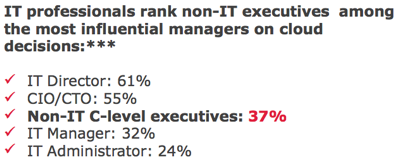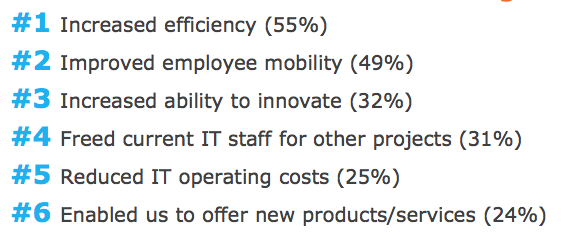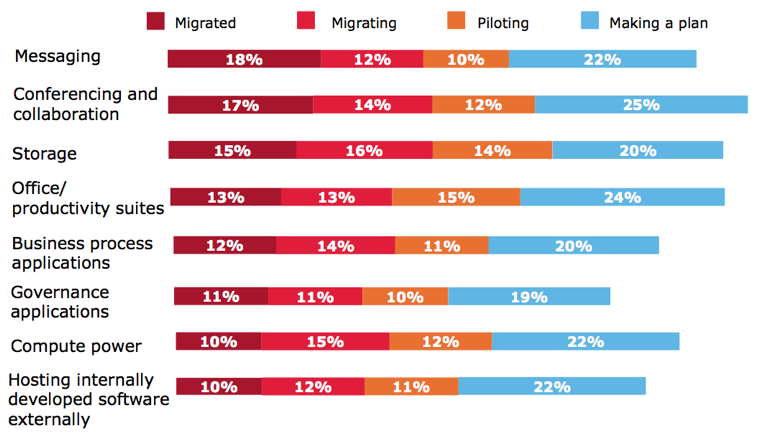The State of Cloud Computing in Higher Education
We already know the cloud is a big deal in higher education and the rest of the enterprise-technology world. But just how big a deal? CDW recently released their annual State of the Cloud survey, detailing “what drives the shift to the cloud, what types of applications organizations are taking to the cloud and what benefits (beyond cost savings) they are achieving.” Twelve hundred IT professionals contributed to this comprehensive survey; we’ve provided a few highlights below.
Cloud Computing Is a Business Decision

Perhaps because the adoption of cloud computing has largely been driven by consumer use, executives and administrators are getting involved in the move to the cloud. Of those surveyed, 46 percent felt that “non-IT senior management is more involved in the cloud decision than in other IT decisions.” This is significant because IT no longer operates in a vacuum. End users are increasingly interested in and appreciative of the technology delivered by IT departments. For colleges — whose end users are largely digital natives and participants in the mobile revolution — technology decisions tend to be driven by the needs of users. Involving actively engaged users in the decision-making process is a positive thing, but doing so makes it harder to meet their demands.
Why Are Colleges Moving to the Cloud? IT Pros Explain

When asked why they had moved or were planning to move applications and data to the cloud, nearly all of the IT workers surveyed cited productivity. The cloud improves efficiency and mobility and frees IT staff to work on other projects. Reduced operating costs ranked fifth on the list of top reasons. A post on The Art of Service explains:
To simply say that cloud computing can increase productivity in the workplace is a bit of an understatement. The truth is, cloud computing can effectively redesign the way your business approaches and accomplishes the work it performs on a daily basis. In this way, cloud computing is less a means to improving productivity and more of a comprehensive infrastructure which allows for the increased streamlining of inter-office activities.
Read How can cloud computing improve productivity?
What Are Colleges Moving to the Cloud?
Consistent with the theme of increased productivity, messaging is the most popular application that has been moved to the cloud, with conferencing and collaboration a close second. Communication tools in the cloud give users more ways to communicate. It’s a simple concept that has a profound effect on the way employees work and students study. Microsoft Office 365, for example, gives students a suite of productivity tools in the cloud, including e-mail, word processing and instant messaging, and it’s easily accessed on any computer or mobile device with an Internet connection.









